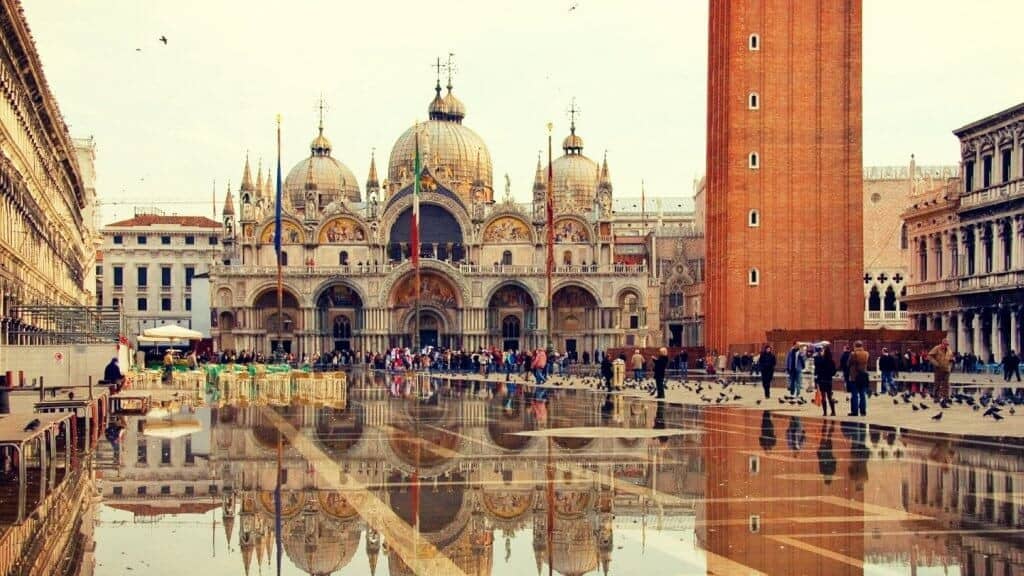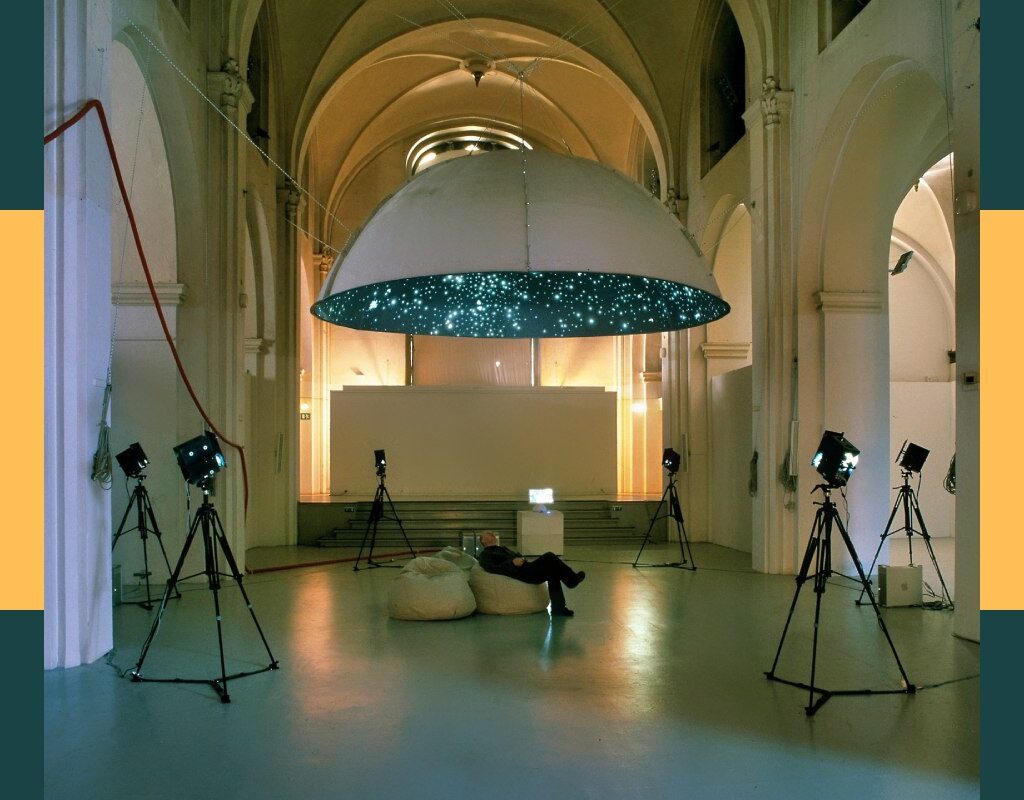Venice, a city that floats upon the waters, houses at its core a wealth of celestial and artistic symbolism. St. Mark’s Square and its surrounding buildings stand as a stage for a story intertwining Venetian architecture with the cosmos, reflecting human fascination with the stars and their influence.
The Astronomical Clock of St. Mark’s Square
The Torre dell’Orologio towers impressively, marking not just time but also the cosmic rhythm over St. Mark’s Square.
Constructed at the end of the 15th century, this masterpiece replaced an earlier, time-worn clock to keep alive both temporal and celestial accuracy in the heart of Venice. Though records of its creation are scarce, it is believed that architect Mauro Codussi designed it, while the mechanism was the work of Gian Paolo and Gian Carlo Ranieri.
This clock is not merely a timekeeper; it is a cosmic capsule, where the twelve zodiac signs, crafted in gilded bronze, move slowly against a backdrop evoking the night sky.
This zodiac representation not only shows the current position of the Sun on its journey through the constellations but also offers a tangible connection to the universe. At its center, a sphere symbolizes the Earth, encircled by another representing the Moon, unveiling its phases and reminding us of the ceaseless celestial dance that guides time’s passage.
The Basilica and Doge’s Palace: A Canvas of Stars and Legends
At the threshold of St. Mark’s Basilica and stretching to the Doge’s Palace, more celestial narratives unfold, woven into the stone and art adorning these iconic monuments.
The basilica’s central door, framed by mosaics depicting religious scenes, houses beneath it a series of reliefs representing the labors of the fields, each associated with a month of the year and its corresponding zodiac sign.
This iconography, common in medieval art, not only links human endeavors with the celestial cycle but also places Christ at the universe’s center, as the lord of time and seasons.
Turning towards the Doge’s Palace, one finds capitals hiding intricate astrological signs in their decorations. These pieces, especially those located on the lower portico, tell stories of the planets and their influence on earthly life.
One of the capitals, situated near the water, displays the planets alongside the zodiac signs they rule, in a clear homage to astrology and its relationship with human fate. The succession of planets follows the order of the Ptolemaic spheres, with the Moon and Sun in key positions, highlighting the connection between astrology and the ancient conceptions of the cosmos.
These artistic expressions not only beautify but also educate, offering visitors a window into the thoughts and beliefs of past eras. The integration of astrology into Venice’s art and architecture reflects human fascination with the cosmos and their desire to find order and meaning within it.
Venice: An Open-Air Museum
Venice unveils itself as an open-air museum where art, history, and science intersect at every corner, especially in the iconic St. Mark’s Square. This space, more than just a tourist gathering spot, acts as a portal to knowledge and appreciation of how our ancestors saw and understood the universe.
The Torre dell’Orologio, with its fascinating mechanism marking the Sun’s passage through the zodiac signs, and the astronomical and astrological details in St. Mark’s Basilica and the Doge’s Palace, are not merely decorations; they are testimonies to an era when the starry sky was an open book, full of stories and meanings.
These wonders offer visitors a unique opportunity to connect with the past and reflect on our place in the universe. In every artistic detail, in every representation of the cosmos, Venice invites us to look beyond the obvious, to seek the hidden stories in stone and paint that remind us of human curiosity and ingenuity.
Wandering through its streets and squares, one discovers that Venice is more than a city; it is a testament to the intersection between art and science, a place where the past meets the present, inviting us to explore and marvel.
In this setting, the astronomical and artistic legacy becomes a bridge between generations, showing that, though times change, the fascination with the sky and its mysteries remains eternal.




